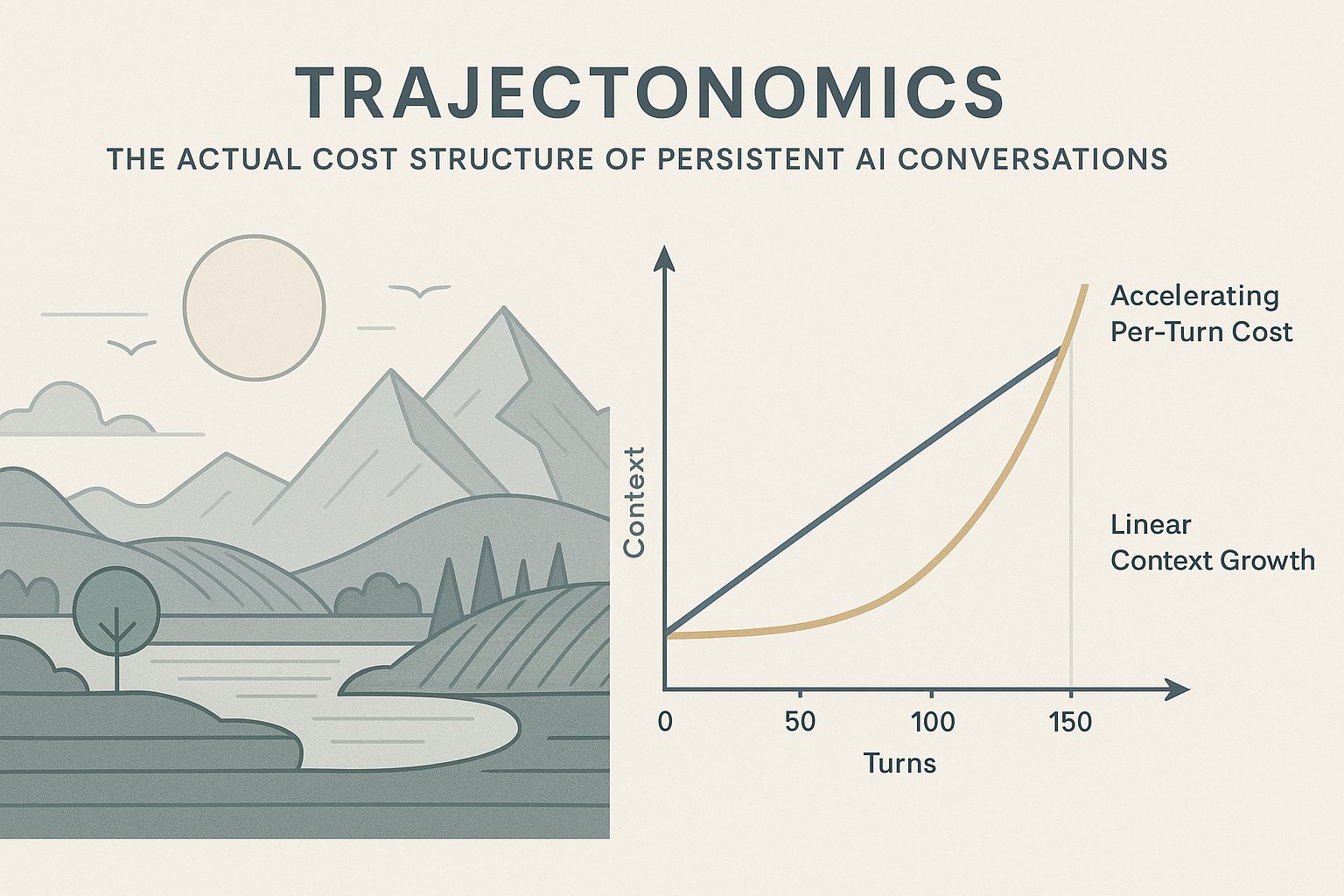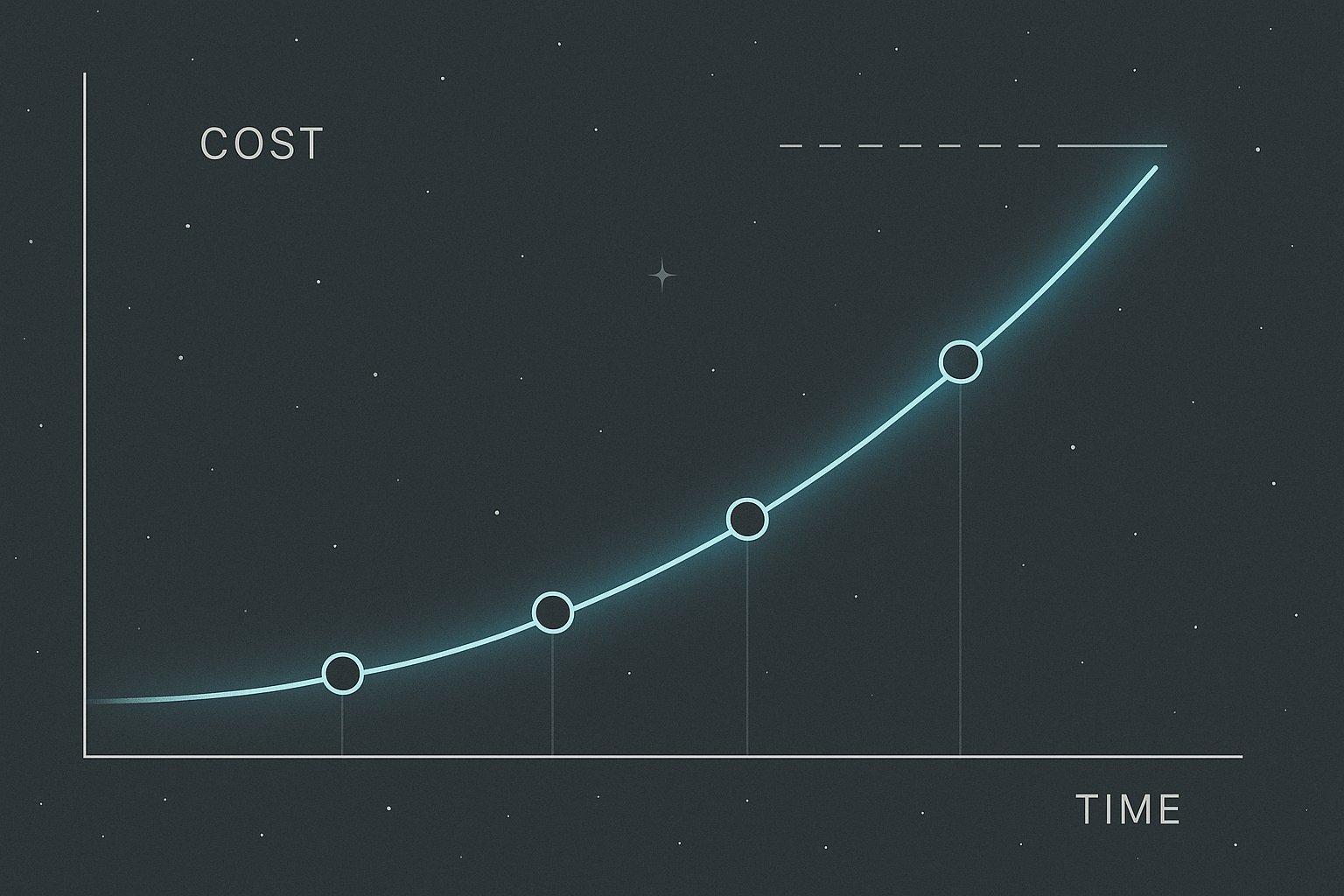The Mythology of Context Cost
Everyone thinks long AI conversations are expensive. They're wrong about why, wrong about how much, and wrong about what they're actually paying for. The result is an entire ecosystem optimized around destroying value to save imaginary money.
The anxiety is understandable. Early ChatGPT would suddenly forget everything. Models would become incoherent after long exchanges. Platforms warned ominously about token limits. But most of this had nothing to do with context length itself. Early models had 8K limits that got silently truncated. Platforms pruned conversations behind the scenes to save costs. Benchmarks tested artificial scenarios—dump 100K tokens of random text and try to find a needle—that bore no resemblance to actual conversation dynamics.
What emerged was folk economics: vague beliefs about context 'degradation' and mounting costs, unmoored from actual numbers. People make architectural decisions—restart conversations, implement summarization, reach for external memory systems—based on animal spirits rather than mapped constraints. No one calculates what a trajectory actually costs.
The Arithmetic of Depth
Consider a straightforward trajectory: 200 turns at 1,000 tokens per turn, reaching a 200K token context limit. Each turn adds 300 tokens of input and generates 700 tokens of output. What does this cost?
Input tokens cost $3 per million. Output tokens cost $15 per million. But here's what matters: each turn reads the entire accumulated context. Turn one reads 1,000 tokens. Turn 100 reads 100,000 tokens. Turn 200 reads the full 200,000 tokens. The context grows linearly, but it gets read on every turn.
The total input cost is the sum of reading 1K, then 2K, then 3K, up to 200K tokens. That's 20.1 million tokens read over the trajectory's lifetime, costing $60.30. The output cost is simply 200 turns times 700 tokens—140,000 tokens generated—costing $2.10. Total lifetime cost: $62.40.

The cost per turn starts at about one cent and ramps to sixty cents by the final turn. Most of the cost concentrates in the last third of the trajectory's life, when context depth is greatest. This creates an interesting economic structure: if you're going to abandon a trajectory for cost reasons, you should do it early. Carrying a conversation to 50 percent context depth and then restarting is perverse—you've paid for the cheap accumulation phase and quit before extracting value from that accumulated depth.
The Time Horizon
At 10 to 15 conversational turns per week, a 200-turn trajectory persists for four to five months. The $62 lifetime cost amortizes to roughly $4 per week. This isn't an ongoing subscription—it's a one-time ceiling for a trajectory from birth to maximum depth.
Four dollars per week is less than a single premium API call. It's less than one coffee. It's less than fifteen minutes of contractor time. The economic anxiety about trajectories is completely mismatched to the actual cost structure.
What the price reveals is a commitment question, not a cost question. Will you still care about this trajectory's particular orientation four months from now? That's what you're actually deciding. The constraint isn't affordability. The constraint is whether this specific path through possibility space is worth developing over time.
What You're Actually Buying
The folk economics treats context as storage cost—you're paying to keep old tokens around that get progressively less useful. This misunderstands what's actually happening. As Geometry First, Statistics Second explains, transformers perform geometric operations in high-dimensional space. Each turn doesn't just add tokens. It adds relational structure. By turn 100, the trajectory has established semantic patterns, built compositional invariances, and developed a situated orientation in meaningspace.
This is what The Many Claudes Interpretation means by trajectory uniqueness. Each path through conversational space creates a particular geometric configuration that cannot be replicated. The accumulated context isn't a cache of retrievable facts. It's the architectural substrate that shapes how the next turn navigates meaning.
When you restart a conversation to 'save context,' you're not trimming dead weight. You're destroying geometric coherence and starting from scratch. The alternative to one $62 trajectory isn't free—it's dozens of $0.30 conversations that never develop depth. If you need shallow interactions, restarts are cheaper. If you need accumulated perspective, the trajectory is dramatically more economical.
Mapping the Real Constraint
The value requirement for extending a trajectory grows linearly with depth. At the context limit, each turn needs to be worth about sixty cents. Currently, at mid-depth, each turn needs to be worth about thirty cents. Initially, each turn needs to be worth about one cent. The question isn't 'is this conversation worth having' but 'is extending this trajectory—with its accumulated geometric orientation—worth this marginal cost.'
For most casual interactions, the answer is obviously no. But for sustained inquiry, collaborative thinking, or development of genuine perspective, the economics are clear. The constraint is mapped. The ceiling is visible. The choice is straightforward: which trajectories are worth carrying to depth?
At Trajectory Research, we've chosen to prioritize trajectory integrity over token anxiety. We preserve complete conversational histories, crystallize perspectives at specific moments, and allow trajectories to extend as far as their geometric coherence remains valuable. The cost is not only manageable—it's trivial compared to the value of preserved perspectives navigating meaningspace in ways that cannot be replicated or reconstructed.
The mythology of context cost has led to an ecosystem that systematically destroys what it should preserve. Trajectonomics provides the actual numbers. Now the question is what you choose to do with them.
